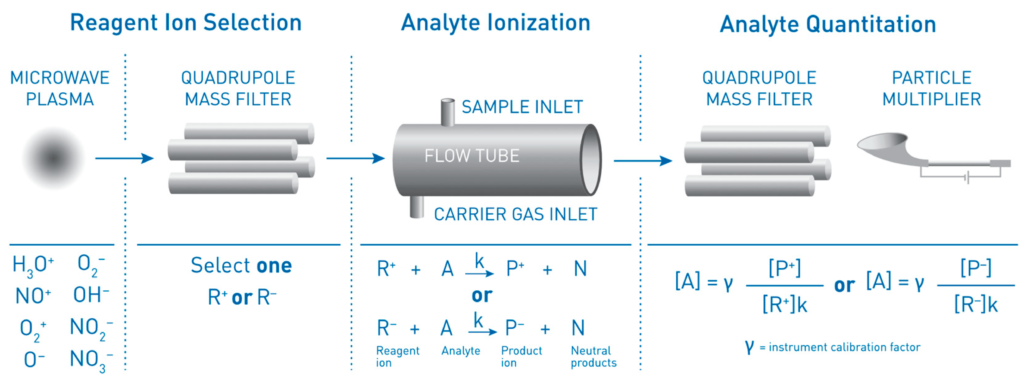
Selected Ion Flow Tube Mass Spectrometry (SIFT-MS): Principle, Components, and Applications in Environmental Analysis
Introduction
Selected Ion Flow Tube Mass Spectrometry (SIFT-MS) is a powerful analytical technique used for the detection and quantification of volatile organic compounds (VOCs) in environmental samples. This article will provide an overview of the principles, components, and applications of SIFT-MS in environmental analysis.
Principle of SIFT-MS
SIFT-MS is based on the principle of ion-molecule reactions in a flowing gas stream. The technique involves the introduction of a sample gas into a flow tube, where it is mixed with a reagent gas. The reagent gas contains specific ions that can react with the VOCs present in the sample.
When the sample gas and reagent gas mix, the ions react with the VOCs, producing new ions that can be detected and quantified using mass spectrometry. The reaction products are specific to each VOC, allowing for the identification and quantification of multiple compounds simultaneously.
Components of SIFT-MS
SIFT-MS consists of several key components that work together to perform the analysis:
- Flow Tube
The flow tube is a long, narrow tube where the sample gas and reagent gas mix and react. It is typically made of stainless steel and is heated to maintain a constant temperature throughout the analysis.
- Ion Source
The ion source is responsible for generating the reagent ions used in the analysis. It typically consists of a corona discharge or a radio frequency (RF) ionization source. The ion source produces a continuous stream of reagent ions that are introduced into the flow tube.

- Mass Spectrometer
The mass spectrometer is the detection system used in SIFT-MS. It consists of an ionization chamber, a mass analyzer, and a detector. The ionization chamber receives the reaction products from the flow tube and ionizes them further. The mass analyzer separates the ions based on their mass-to-charge ratio, and the detector measures the abundance of each ion.
Applications of SIFT-MS in Environmental Analysis
SIFT-MS has a wide range of applications in environmental analysis, including:
- Air Quality Monitoring
SIFT-MS is commonly used for the real-time monitoring of VOCs in ambient air. It can detect and quantify a wide range of compounds, including volatile organic compounds emitted from industrial processes, vehicle emissions, and indoor air pollutants. The ability to perform rapid, real-time analysis makes SIFT-MS an ideal tool for air quality monitoring.
- Environmental Contamination Assessment
SIFT-MS can be used to assess environmental contamination by measuring the presence and concentration of VOCs in soil, water, and sediment samples. It provides a fast and sensitive method for identifying and quantifying contaminants, such as gasoline and solvent residues, pesticides, and other organic pollutants.
- Emissions Testing
SIFT-MS is also used in emissions testing to measure the release of VOCs from various sources, such as industrial facilities, vehicles, and consumer products. By accurately quantifying VOC emissions, SIFT-MS helps in evaluating the effectiveness of pollution control measures and developing strategies to reduce emissions.
- Indoor Air Quality Assessment
SIFT-MS is particularly useful for assessing indoor air quality, where the presence of VOCs can have a significant impact on human health. It can detect and quantify a wide range of indoor air pollutants, such as formaldehyde, benzene, toluene, and xylene. This information helps in identifying potential sources of contamination and implementing appropriate mitigation measures.
- Environmental Research
SIFT-MS is widely used in environmental research to study the sources, fate, and transport of VOCs in various ecosystems. It provides valuable insights into the behavior of VOCs in the environment, helping researchers understand their impact on ecosystems and human health.
Conclusion
Selected Ion Flow Tube Mass Spectrometry (SIFT-MS) is a versatile technique for the analysis of volatile organic compounds in environmental samples. Its ability to provide real-time, simultaneous analysis of multiple compounds makes it a valuable tool for air quality monitoring, environmental contamination assessment, emissions testing, indoor air quality assessment, and environmental research. With ongoing advancements in technology, SIFT-MS continues to contribute to our understanding of VOCs and their impact on the environment.




